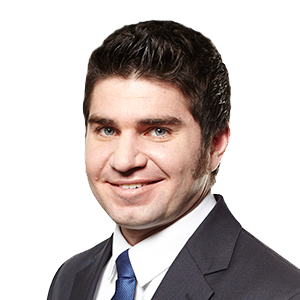Grand Tour cycling races are an ultimate test of endurance. Taking place over the span of weeks, covering thousands of kilometres and climbing legendary mountains, each race demands not only lasting physical strength but the ability to persevere and rebound from failure.
Nairo Quintana’s victory at the 2014 Giro d’Italia came as much from his stunning climbs in the Dolomite mountains, as it did from his ability to rebound from the deficit he faced after the first team time trial.
Quintana struggled with illness early in the Giro. The Colombian needed to find his pace in the mountains, but much of the first half of the Italian race was flat, and the Movistar rider was three minutes, 29 seconds back of then leader Rigoberto Uran. Quintana knew his best stages were still to come, and so he appeared to focus on his strengths. Watching his rivals in the lead-up to the steeper terrain, Quintana gauged his moment, striking on the snowy and wet stage 16 over the Stelvio pass.
With controversy swirling over whether a neutralization was called — the term was used in Italian over race radio, but apparently not in English or French — the new race leader was recovering from a brutally hard and cold stage. Quintana’s fingers were so numbed by the cold and damp conditions that he was unable to feed himself, riding close enough to the team car to have food pushed into his mouth. While his rivals stopped on the mountain top to put on extra clothing in an attempt to stay warm, Quintana kept going.
Decisive stages determine race leaders, but the strength of mind and character determines the winner. Quintana rarely gives away his circumstance, with very few tells in his riding. On the bike, he remains stoic.
The young climber went on to solidify his lead with astounding mountain performances, including the final time trial — an uphill affair — where he was untouchable. By the time Quintana reached the finish line in Trieste, he had spent nearly a week in the pink jersey, and was also awarded the white jersey for best young rider. It was during his runner-up performance at the 2013 Tour de France where Quintana’s ability to be a GC contender first started to shine through.
Less than a year later, Quintana is now a Grand Tour champion.
Whether Quintana rides or contends in the Tour de France is still up in the air. Rosters have yet to be announced, and Quintana’s inclusion will depend on how he recovers from the Giro. Winning back-to-back Grand Tours is exceptionally rare. Only seven riders have managed a Giro-Tour double, the last being Italian Marco Pantani, in 1998. However, early announcements indicate that Quintana is expected to target the 2015 Tour de France.
Fine showing from Canadians
The determination to excel isn’t a mark of only the fastest riders in a Grand Tour. Canadians Ryder Hesjedal and Svein Tuft both illustrated a toughness that has brought each a strong measure of respect.
Hesjedal’s success in joining the decisive Stage 16 break with Quintana and Pierre Rolland over the Stelvio looked to be a hollow effort. Hesjedal had started well back on his heels from the first day’s team time trial where the Garmin Sharp team suffered a devastating crash. Instantly minutes down after just one stage, the 2012 Giro champion looked to be out of contention again. He had gradually worked his way up the rankings but wasn’t expected to be a factor.
As part of the breakaway group on stage 16, Hesjedal had chosen his moment. He dug deep and held onto Quintana’s wheel while the rest of the break dropped away. Eventually taking a pull as the pair neared the end of the stage, Hesjedal finally crossed the line just eight seconds away from Quintana on the day. The ride vaulted the Canadian into the top 10, less than a minute back from a podium position. Ultimately, the Victoria, B.C., cyclist climbed up to seventh overall before finishing ninth.
Tuft bookended his Giro d’Italia well, though suffered during the race. An Orica-GreenEDGE victory on the opening day — Tuft’s 37th birthday — saw team officials give Tuft the honour of wearing the pink leader’s jersey on day two of the race. Tuft played his super domestique support role for teammate Michael Matthews who took over the lead after day two.
A crash on the sixth day of racing, however, left Tuft battered. One of cycling’s true hardmen, Tuft rode on anyway, while many in the crash abandoned the Giro. Despite his injuries, Tuft found the resolve to lead the peloton and set the pace later in the race. On the final stage which was otherwise a mostly ceremonial procession, Tuft helped lead two breakaways.
The professional peloton now take a break. Just over one month of recovery time remains before the start of the Tour de France. In that time, teams will assess riders and choose their roster for the Tour. Some may even race in lower tier events as preparation between now and le grande depart. Then, the cycle of suffering and endurance continues.

